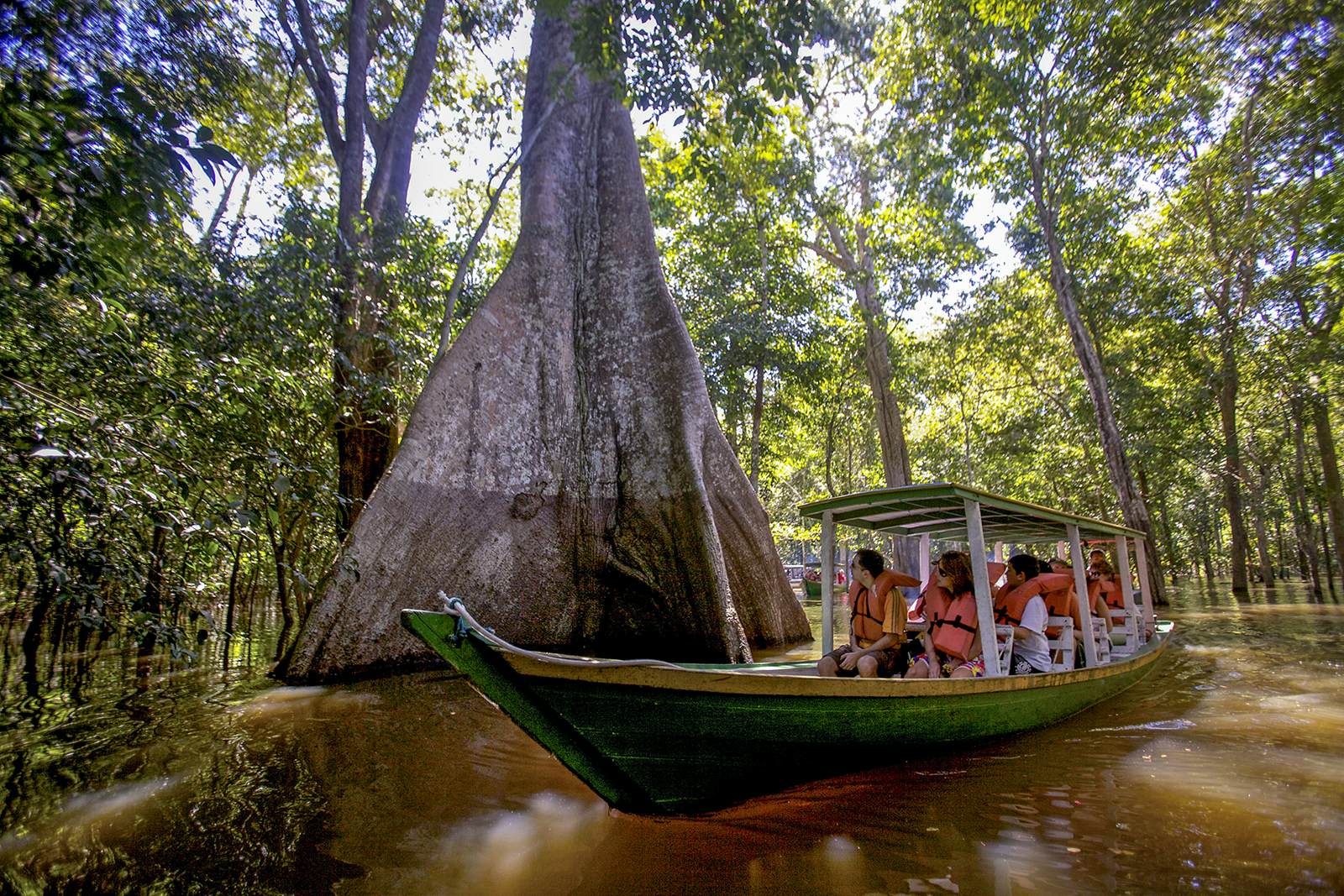The Amazon rainforest is the second-largest rainforest in the world. Spanning from north to south from Argentina to Columbia, the Amazon is home to over 5 billion trees that produce an estimated 25 billion cubic meters of water every day. That’s enough water to fill Lake Hurst every day of the year. The moisture and biodiversity of the jungle have attracted explorers for centuries.
It’s been so long since humans set foot in this part of the world that it’s nearly unrecognizable now as a result. The Amazon has changed a lot since European colonization first brought settlers into this frontier territory. As a result, exploring it today is not quite as daunting as it once was— although it is still far more challenging than exploring other parts of North America or Europe.
Exploring any new area always comes with risks and dangers, and no one has ever come back from surviving alone in the wild for extended periods of time. However, if you are an adventurer at heart who wants to take your own pictures with your own camera, then maybe exploring some of these remote locations will be right up your alley…
What is the Amazon Rainforest?

The Amazon Basin is one of the world’s largest rainforests. The dense forest covers a large area in the Amazon river basin in South America, encompassing eastern Brazil, parts of Colombia, Venezuela, and Ecuador.
The area’s subtropical climate and abundance of rainfall have created a unique environment that is home to more than 3.1 million species of plants, 2.6 million species of insects, 500,000 species of birds, and 1,000 species of jaguars—making it one of the most biodiverse places in the world.
This rainforest is the most biodiverse place on earth, with 3.1 million species of living organisms. A huge number of species have evolved to thrive in the humid conditions of the rainforest. The Amazon rainforest is one of the most ecologically diverse places on earth, and it’s home to over half of all known plant species.
In terms of animal life, the Amazon rainforest is home to a staggering 2.6 million species, making it one of the most biodiverse places on earth.
How to Travel in the Amazon Rainforest
- Opportunity to See a Different Kind of People: If you’re someone who likes experiencing the culture of other people through their daily lives, then visiting the Amazon rainforest might be right up your alley. The Amazon is home to hundreds of different indigenous groups and cultures, giving you the opportunity to experience their daily practices and way of life.
- Cultures to Explore: The Amazon rainforest is home to a wide variety of indigenous cultures and communities, making it an ideal destination for travelers interested in experiencing a different kind of culture. You can learn about the practices and beliefs of different indigenous communities, explore the art and crafts of different indigenous cultures, and even interact with the local people to understand their way of life better.
- Wildlife to Watch: One of the primary reasons people visit tropical rainforests is to experience and see the wildlife. The Amazon rainforest is no different, and you can visit and experience many different kinds of unique wildlife in this part of the world. You can see monkeys, toucans, pink river dolphins, and many more unique species.
- Challenges to Conquer: Tropical rainforests are often very dangerous and challenging places to visit. In addition to the threat of diseases, there are often very challenging conditions to deal with and dangerous wildlife. You need to be prepared and confident in your abilities if you want to explore the Amazon rainforest.
Things to Know Before You Go

- Be Prepared: No matter where you travel, you should be prepared. However, the conditions in the Amazon are often very challenging and dangerous. If you’re not prepared, you could face very serious challenges and dangers while you are there. If you’re not confident in your abilities, then you should think twice before traveling to the Amazon.
- Know the Local Conditions: You can’t plan for every possible type of condition or situation that you might encounter in a remote area like the Amazon rainforest. However, you need to understand some of the conditions that others have faced in the area before traveling. You can find out more about the local conditions by looking at guides and stories from other travelers.
- Protection from Harmful Insects: The Amazon rainforest is home to many different types of dangerous insects that can cause serious harm to humans. You can protect yourself from some of these insects by wearing long sleeves and pants when you are in the forest.
- Protection from Malaria: While the Amazon is not a high-risk area for malaria, it is a potentially dangerous place to visit if you have a high risk of contracting malaria. You can protect yourself from malaria by bringing along anti-malaria medication if you are at risk.
- Be Ready for Climate Change: Many experts believe that the Amazon rainforest will experience more extreme and frequent climatic changes in the future due to climate change. It’s important to be ready for these changes, and you can learn more about how to protect yourself by visiting this page.
Conclusion
The Amazon rainforest is one of the most biodiverse places on earth, and it may be one of the most difficult places to visit for anyone who wants to do it on their own. The jungle is full of insects, animals, and plants that can cause serious harm to humans, and it’s filled with dangerous conditions that can be difficult to predict. If you are an adventurer at heart, then it might be worth the challenge to explore the Amazon rainforest.


